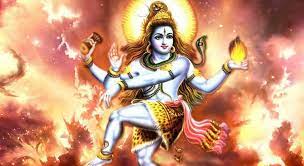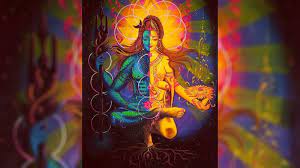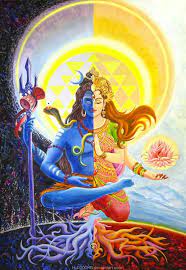
Shiva's Tandava: Exploring the Cosmic Dance of Creation, Preservation, and Destruction
In the heart of Hindu mythology, amidst the cosmic tapestry of gods and goddesses, lies a mesmerizing depiction of Lord Shiva's divine dance – the Tandava. This celestial dance is not merely a rhythmic movement; it is a profound portrayal of the cyclical nature of existence – a dance that encapsulates creation, preservation, and destruction in a mesmerizing whirlwind of cosmic energy. In this blog, we embark on a journey to unravel the layers of symbolism and significance woven into Shiva's Tandava, exploring how it reflects the essence of life itself.
The Rhythmic Dance of the Cosmos

The Tandava is more than a performance; it is a cosmic rhythm that reverberates throughout the universe. Shiva's movements in the Tandava create vibrations that resonate with the heartbeat of existence. Each step, each gesture, and each pose hold the power to influence the flow of cosmic energies, governing the cycles of birth, growth, decay, and rebirth. This rhythmic dance reminds us that life is a dance of energy, perpetually flowing and changing.
Creation: The Birth of Worlds

In the Tandava, Shiva's dance embodies the act of creation. As his feet strike the earth, they give birth to new worlds and dimensions. The cosmic energy unleashed through his dance sets the stage for the emergence of galaxies, stars, planets, and life forms. The Tandava serves as a vivid reminder that creation is not a singular event but an ongoing process, and that the universe is alive with the potential for new beginnings.
Preservation: The Balance Within Motion

While Shiva's Tandava manifests creation, it also sustains the delicate balance that upholds the cosmos. His graceful movements symbolize the preservation of harmony, as he holds the cosmic forces in check. Just as a dance requires harmony in motion, the universe requires equilibrium to thrive. Through the Tandava, Lord Shiva teaches us the significance of maintaining balance amidst the ebb and flow of life's rhythms.
Destruction: Embracing the Impermanence

The most awe-inspiring aspect of Shiva's Tandava is its depiction of destruction – not as a force of malevolence, but as a necessary aspect of the cosmic cycle. As Shiva's dance intensifies, it brings forth the dissolution of what once was. Destruction is not an end, but a transformative phase that clears the way for new cycles of creation. This aspect of the Tandava reminds us that change is an inevitable part of life, urging us to embrace impermanence and find solace in the cycles of transformation.
Inner Tandava: A Personal Reflection

Beyond its cosmic symbolism, the Tandava serves as an allegory for our individual journeys. Just as Lord Shiva dances the Tandava, we too engage in our personal dance of life, oscillating between creation, preservation, and destruction. This dance represents our growth, challenges, and the evolution of our consciousness. By recognizing our own inner Tandava, we align ourselves with the grand dance of the universe and become active participants in the cosmic symphony.
Conclusion
Shiva's Tandava is not just a dance; it is a timeless reminder of the intricate interplay of creation, preservation, and destruction that shapes the universe. Through its symbolism, we learn to appreciate the cyclical nature of life and the dynamic forces that govern it. As we delve into the mystique of the Tandava, we not only understand the cosmic dance but also embrace its teachings, allowing its rhythm to guide us on our own journey of self-discovery and spiritual growth

